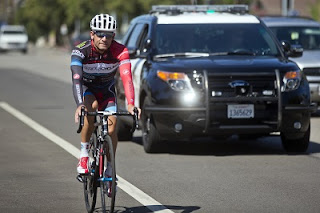To some drivers, that narrow strip of road represents a sort of "theft" of the roadway that is their right. You know the ones, the people who write irate letters to newspapers claiming that roads are built with fuel taxes and vehicle registrations so bicycles that pay neither have no business on the pavement.¹ "Lycra Losers go home!" is their rallying cry. Whether it's aggression on the part of these anti-cyclist grumps or just garden-variety inattentive drivers;² sooner or later you, a cyclist, will feel hot exhaust on your left leg: you've just been passed by a driver who seems to think that the white stripe on the road is all that's necessary to protect a vulnerable user.
Nope, drivers, the lane marker is not a force field generator, and you are still required to pass a cyclist at a safe distance – even cyclists who are in bike lanes!
¹ They're wrong. Construction and maintenance of the local roads that cyclists and pedestrians use are mainly funded by general use taxes; which includes sales, property, and state/local income taxes.
² I don't know about other cyclists, but a surprising number of the vehicles with which I have near misses are carrying handicap plates (especially disabled veteran).
copyright © 2018-2023 scmrak


No comments:
Post a Comment